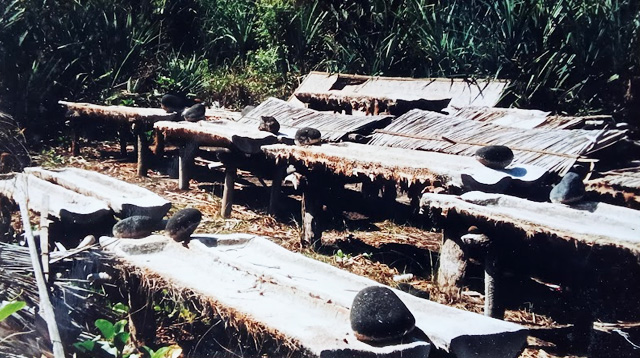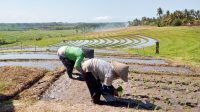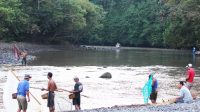- TRADITIONAL salt making remains active in a number of coastal areas of Bali producing delicious and high quality salt.
- Salt farmers do not only produce for local consumption but also for export commodities
From ancient to modern life, we still need salt for various purposes. In addition to consumption, salt is also needed for treatment and body therapy such as in spa treatments.
Traditional salt making can be a tourist attraction because the processing activity still maintains a simple, unique and interesting method of salt farming.
One of the locations for traditional salt making is at the Pesinggahan Village, Kusamba, Klungkung. It sits close to the Goa Lawah Temple tourist object.
Salt making steps
Traditional salt-making in Bali begins with taking seawater, and then splashing it on a stretch of black beach sand that is hot in the sun.
This watering step is carried out up to 4 times in order to get the first salt water. If the sun is extremely hot, it will take the salt farmers at least 4 hours to dry the sand.
Well, after the sand in the field forms slabs, it will be dried again on series of half-blade of coconut tree to become salt crystals. This drying process takes two days for the crystals to become salt.
When it is completely dry, the salt farmers take the salt crystals with a spoon or coconut shell bowl. These small grains of salt are ready to be consumed.
Salt production center
The black sandy coastal area of Bali Island has great potential for traditional salt production. In some locations, the salt making has been made through generations.
Balinese traditional salt products have been known to be hygienic as well as having high quality and distinctive taste so that it has been proven by the Balinese people for generations. Apart from being marketed to the local community, this traditional salt product has also been exported to some countries like Japan, Korea, Thailand, France, Switzerland, Russia and the United States.
Several centers of Balinese traditional salt production spread across several coasts, such as the Kusamba (Klungkung), Amed and Kubu (Karangasem), Tejakula and Pemuteran (Buleleng), Gumbrih (Jembrana), Kelating (Tabanan) as well as Pedungan and Pemogan (Denpasar City).
Geographical Indication
By law, Balinese local traditional salt products of Kusamba (Klungkung) and Amed (Karangasem) areas have been registered and protected by Geographical Indications (GI) from the Directorate General of Intellectual Property, the Ministry of Law and Human Rights of the Republic of Indonesia in 2015 and 2020, respectively.
What is Geographical Indication? Geographical Indication is a sign indicating the area of origin of an item and/or product due to geographical environmental factors including natural factors, human factors or a combination of these two factors that explain the reputation, quality, and certain characteristics of the goods and/or products made.
Then, the sign used as a Geographical Indication can be in the form of a label or label attached to the product. The sign can be the name of a place, area, or region, words, pictures, letters, or a combination of the above mentioned elements.
Bali Gubernatorial Circular
To appreciate, protect, use and assist the distribution of local Balinese traditional salt products, the Governor of Bali, Wayan Koster, issued Circular No.17/2021 dated September 21, 2021 regarding the Utilization of Balinese Local Traditional Salt Products.
All government officials, private parties involved in the catering business and related institutions are encouraged to use the local salt products.
Relevant government institutions are encouraged to assist in all matters relating to the preservation, development and marketing of these local salt products through MSMEs or cooperatives so that the cultural heritage of local farmers’ products remains sustainable.











